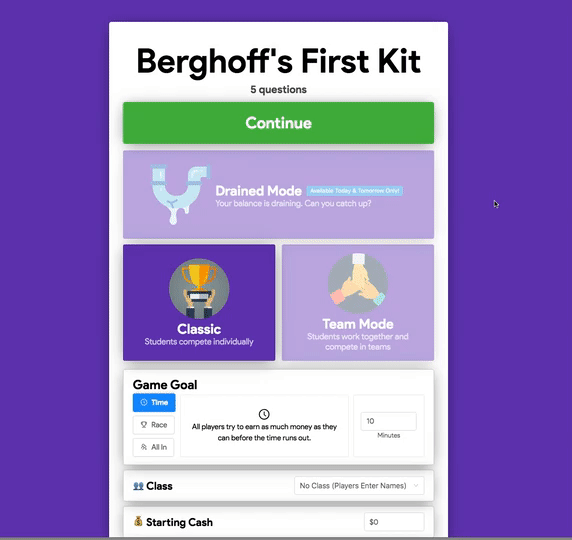Have Some Fun While Learning With Gimkit!
@LisaBerghoff/@MrKimDHS
I LOVE learning about new technology tools! I love figuring them out. I love thinking of different ways that kids can learn while using the tools. I love hearing the stories behind how they were created. I often get asked how I learn about new tools. I can't say that there is a one-way path to new online educational tools. Sometimes I learn from the blogs or podcasts I follow. Sometimes there is a buzz on Twitter. Sometimes another teacher brings it to my attention. This particular new one came from a call that I put out to my Google Innovator Academy cohort. I did a session during our professional development time on Wednesday called 30 Tools In 60 Minutes. It was really fun to put together and present. I had my list of 30 tools ready to go but decided to contact my cohort and see if they knew of any that I should add to the list. One of my buddies, Chris Young (@CYoungEdTech) mentioned Gimkit and that it was created by a high school student. I decided to check it out and I was hooked. I decided to try it out right away and it got rave reviews from all of my demo-ers.
So, if you love Kahoot, and who doesn't, really, I highly encourage you to check out Gimkit. Created by high school student Josh Feinsilber of Seattle, Gikit removes some of the barriers that exist with Kahoot. For example, the question and answers are displayed on each student's screen, eliminating the need to be able to look, read, and transfer from the screen. Josh writes a blog about his journey with creating Gimkit and his future plans for the site. If you want to see what happens when high school students write for an authentic audience, check out his blog here.
To Get Started, Go To Gimkit.com

Here are the details you need to know:
- Gimkit calls the games Kits. You can assign kits for homework, run them live in the classroom, or even have students collaborate and add questions to a kit.
- Gimkit "seasons" allows you to track student achievements over time. You can track for an individual game, student vs. student, or even class vs. class.
- Students earn money as they answer questions correctly. If you allow it, their cash can be used to purchase power ups, or themes. You can also choose to allow only power ups that won't harm other players.
- You can import questions that you already have in Quizlet or in a csv file.
- Once you create your game, your students go to Gimkit.com/play and enter the game code to play.
- You can choose from 3 modes: students can play for a specific amount of time (ex. whoever has the most cash after 10 minutes wins), for a specific amount of cash (ex. first person to reach $10,000 wins), or all in (ex. the collective group needs to reach a certain amount of cash for the game to end).
- There is also a Team Mode, where students work together in groups.
- The whole process is extremely simple and the site walks you through the steps to set it up. I was able to create a quick quiz for my class and have them actually playing it in just a few minutes.
- After playing your game, you can access a really nice report that shows general stats, a breakdown by question and an individual report for each student.
Gimkit is a winner when it comes to tools that encourage maximum engagement from all students.
Have you tried Gimkit? Let us know how it went. Want some help getting started? Let us know.
Have you tried Gimkit? Let us know how it went. Want some help getting started? Let us know.

No comments:
Post a Comment